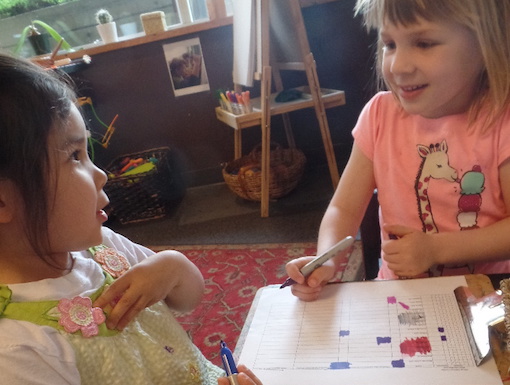
“The more you try, the more you get successful!”
by Becky Krueger, Educator, Hilltop Children’s Center
In our classroom, flexibility is one of the core values that guide our work with the children and families we serve. We use this word often in our daily interactions with the children: “Thanks for letting Jamal be the leader today, even though you were hoping to have a turn. That was so flexible of you!” or “Wow, Lily, you played a game you’ve never played before with some different friends this morning. Way to be flexible!” This word also comes up in our conversations with families throughout the year, both in our less formal communication and during our fall and spring conferences. But what do we really mean when we talk about flexibility in young children? Where is the value and joy in cultivating this skill, both in the children and in our selves? How can we as adults practice and model it for the children in our lives & classrooms?
What is flexibility and why is it important?
According to the current field of neuroscience, cognitive flexibility refers to the ability to switch one’s perspective, focus, or attention, depending on one’s situation and environment. It is directly tied to one’s ability to problem-solve and think creatively, and it is one of the three most important components of a child’s development of executive functioning (EF) skills. These skills are crucial for a child’s social, emotional, and cognitive development, and lay the foundation for success in learning and life.
In our classroom, we often support children’s growing flexibility by scaffolding their social interactions, their approach to challenges, and their ability to manage their emotions. In some instances, the support might be in the form of a phrase or a question to the child. For example, Jordan is a child in our classroom who often helps a teacher get snack from the kitchen in the mornings. Recently we asked him: “Jordan, I know you usually help us get snack in the mornings. But Gabriella needs a break from the classroom right now. Could you be flexible and let her be the snack helper today, instead?” While disappointed, Jordan understood this request and was able to make space for his friend to have a turn that day. At other times, we might ramp up our support for more “spicy” situations, or those moments in the classroom when children come into conflict with one another over something important to them. One day in the block area, Henry was setting up a marble ramp with a few other peers when Kajia joined the group and started shifting a few blocks around. Henry was not happy about this: “Kajia, stop, I want it that way!” Kajia felt confident that she was adding something interesting to the structure: “But Henry, I have an idea, I want to see what happens if I do this!” The two continued to grapple back and forth, each feeling strongly about their own ideas and not able to be flexible enough in that moment to make space for the other child’s idea.
My mentor teacher and I stepped in and offered up varying levels of support, increasing our involvement as the situation became more challenging for Kajia and Henry to work through. First, we posed questions to the children, such as, “Can there be more than one idea here?” Then we tried sharing our observations with the children: “Kajia, Henry was working here before you came in, so it might feel unfair to him if you just start moving blocks around. Keep talking to each other.” Next, we moved into more directly guiding their interactions toward a respectful place despite big emotions: “Kajia, it’s not fair for you to take charge of everything with the ramp…Henry, I want you to think of something kind to say to Kajia about the cool idea she had for the ramp.”
While our values and experiences around supporting children’s flexibility guided our interactions with them that morning, so did our knowledge of these children as individuals. Henry and Kajia both feel strongly about executing their own ideas, and are still developing their abilities to listen to and incorporate other children’s ideas into their play. Our awareness of this helps inform the levels of support we provide them as teachers, both in these moments of conflict and throughout the course of their school year.
When we as teachers offer up these different supports during “real time” problem-solving & spicy play, our goal is to support children’s cognitive, social, and emotional flexibility. So, how do we set the stage in our classrooms in a way that encourages flexibility in the children? By providing many opportunities for diverse play scenarios and interactions with a wide variety of their peers, by offering up open-ended materials and provocations, by scaffolding children’s experiences (providing a bridge for them to get to the very next challenge in their learning), and by naming and celebrating the flexibility we see in action (“Way to be flexible!”). In my classroom, we often hear the children using the word flexible with pride to describe themselves when they make space for a friend’s idea, let another child have a turn at something, change their idea or plan to accommodate the larger group, or overcome a challenge: “I was so flexible!”
How Flexibility affects life-long success: The Power of the Growth Mindset
In 2007, Stanford psychologist Carol Dweck developed a new theory, based on several decades of research, about what leads to our success or failure in our schooling, careers, and relationships. She called this theory mindset, which refers to people’s beliefs about themselves and their abilities. Dweck argued that there are two different kinds of mindsets that shape the way we move in the world: a fixed mindset is one in which a person believes that their qualities and abilities are fixed traits, that they either are or are not smart, talented, capable, etc. and that nothing can change that reality; a growth mindset describes the belief that one can improve or achieve certain skills through dedication, practice, and perseverance.
One child in our classroom summarized the ability we all have to cultivate a growth mindset in a rather poignant way. As we were all sitting down to snack one day in the fall, a conversation came up between my co-teacher and the children about the importance of not giving up on something just because it’s challenging. Joseph, who was 4 years old at the time, offered up this bit of wisdom to us: “The more you try, the more you get successful!” Several of the children nodded their heads or offered up a “Yeah!” in agreement, and when our teaching team reflected on this amazing statement afterwards, we agreed that it was destined to become the Mountain Room motto for the year. Joseph’s words of wisdom are now displayed outside our classroom door, and are often quoted by both the teachers and children in our classroom when someone is working through a challenge and finds success after many attempts. Recently, I was congratulating Alicia on successfully completing a puzzle that had previously been difficult for her: “You kept trying, you didn’t give up, and then you were able to do it!” I said. Alicia responded: “Yeah, ’cause the more you try, the more you get successful!”
Walking the Talk: Modeling Flexibility for our Children
While I have been putting so much energy into thinking about and supporting the children’s flexibility this year in my classroom, it’s easy to forget at times that my own flexibility is constantly a work in progress. Every day I enter Hilltop, I’m presented with a new set of challenges that offer up the opportunity to “practice what I preach.” I often ask myself, am I staying open to the children’s ideas and supporting their play in a way that best supports them, even when it feels hard or uncomfortable for me? Am I incorporating not just my own and my co-teachers’ values into my work in the classroom, but those of our classroom families? Am I making space for and listening to my colleague’s ideas and reflections before getting too attached to my own ideas around curriculum planning? I’ve come to see flexibility as a life-long journey, one that I am embarking on alongside the children, families, and teachers of Hilltop. While it is not always easy, I’m learning first-hand about the power it holds for success in many areas of life. And why not make it joyful along the way?
2 thoughts on ““The more you try, the more you get successful!””
Comments are closed.
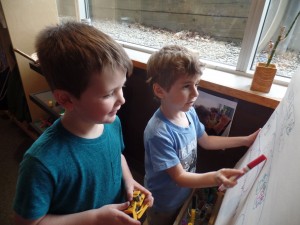
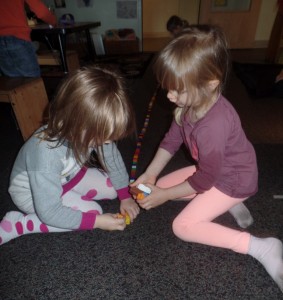
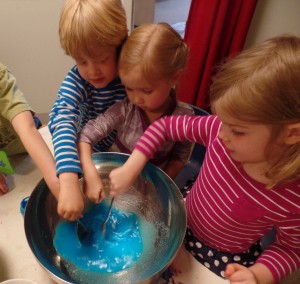
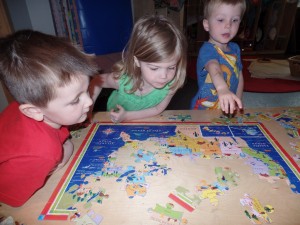
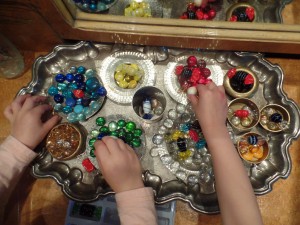
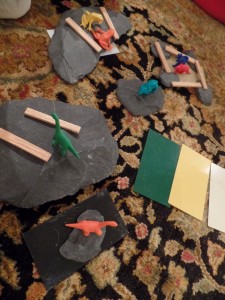
This is a wonderful example of the power early education has on children. Playtime is their work and you are giving them the skills of a lifetime. You can see in our world that not everyone has these skills to help them navigate their everyday lives. What lucky kids you have!
This kind of work with children is extremely meaningful on so many levels. Keeping notions of flexibility and concepts of mindset at the edge of my parenting helps me understand and navigate difficult and joyful interactions with my children. Wonderful work, Becky!